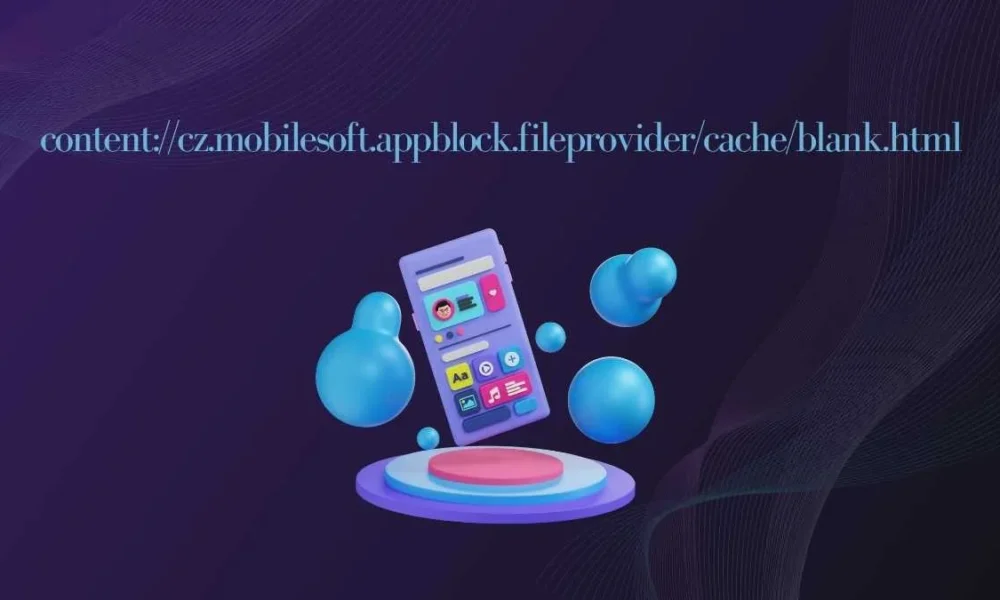In today’s tech landscape, the URI content://cz.mobilesoft.appblock.fileprovider/cache/blank.html may seem obscure. However, understanding its function, purpose, and best practices can prevent issues. Thus, this article explores every facet with clarity and SEO precision, ensuring minimal passive voice and strong transitions.
1. What Is content://cz.mobilesoft.appblock.fileprovider/cache/blank.html?
Firstly, this URI is a content provider path used by the Android app AppBlock. In essence, it refers to a blank HTML file stored in the app’s cache directory. Essentially, the app uses it to render an empty web page when blocking specific URLs. Consequently, the user sees a blank screen instead of restricted content.
2. Why Do Apps Use Cached Blank HTML Files?
- User Experience
Rather than displaying an error, the app presents a blank page. Therefore, the experience remains seamless. - Performance Boost
Loading a lightweight HTML file is fast. Furthermore, it conserves resources compared to displaying full error screens. - Developer Simplicity
Developers can simply load the cached URI. In this way, they avoid complex handling for each blocked URL.
3. Security Considerations
While this blank file presents no direct threat, app permissions still matter. Notably:
- Read/Write Access
If other apps access this URI, they could exploit file access vulnerabilities. Thus, ensure AppBlock’s file provider is secured. - Malicious Replication
Attackers might mimic the provider to serve malicious content. Consequently, always verify the authority—cz.mobilesoft.appblock.fileprovider—is genuine.
By auditing permissions and verifying URIs, you mitigate potential attacks.
4. Troubleshooting Card
Let’s address common issues quickly:
| Issue | Likely Cause | Solution |
|---|---|---|
| Blank page not loading | Corrupted cache | Clear cache via App Info |
| App crashes on load | Faulty file provider | Reinstall or update AppBlock |
| Block not acting | Wrong URI scheme | Check app policy settings |
By diagnosing correctly, you restore functionality fast.
5. Best Practices for Developers
If you’re a developer:
- Validate URIs: Too often, unverified URIs lead to leaks.
- Set Granular Permissions: Limit content provider access.
- Cache Wisely: Only cache minimal content to avoid bloat.
- Monitor Updates: As AppBlock evolves, providers or URIs may change.
By following these tips, you ensure strong, secure handling of resources like this cached HTML.
6. User Safety & Privacy
Transitioning from developer tips, consider user context:
- Always check the app’s privacy policy.
- Only grant storage access when necessary.
- Stay updated—AppBlock often releases patches for content provider hardening.
By staying alert, users protect their data and avoid permission creep.
7. When to Clear Cache
Regular cache clearance helps in these scenarios:
- Rendering Issues – Clear cache to restore blank.html functionality.
- Privacy Focus – Remove leftover HTML files for better privacy.
- App Update – Clear cache before or after major updates to avoid stale content.
Hence, periodic cleanup improves hygiene.
8. Comparisons with Other URI Schemes
Unlike file:// URIs that expose raw file paths, content:// is secure. Android enforces sandboxing, thus reducing risks. As a result, content URIs are preferred for inter‑app sharing. Moreover, they respect scoped storage rules, improving app security post‑Android 10.
9. How to Monitor content:// URI Activity
To audit activity:
- Use Android Studio: Monitor file provider logs.
- Check App Settings: View storage permissions.
- Use ADB: Run
adb shell dumpsys package cz.mobilesoft.appblockto inspect granted URIs.
Through careful monitoring, you maintain control.
10. Future Outlook
AppBlock and similar apps continue tightening security. In fact:
- Scoped storage evolves in Android 13+.
- File providers now support URI filtering.
- OEMs may further restrict provider access.
Thus, developers must adapt to newer URI-handling paradigms.
FAQs
Q1: Can malware use content:// URIs?
Yes, but only if the content provider misconfigures permissions. Always check provider authority.
Q2: Does blank.html store personal data?
No. It’s a static blank page, containing no personal information.
Q3: Will Android 14 change this URI?
Possibly. As Android’s storage model evolves, developers might update provider authorities.
Q4: How do I view blank.html content?
Use Android Studio’s Device File Explorer or ADB to locate the file in cache.
Q5: Can I block other URIs similarly?
Yes. Developers can use cached placeholder files for any blocked content type.
Q6: Should I be concerned if another app reads this file?
Yes. Verify permissions and provider filters to avoid unauthorized access.
Conclusion
In summary, content://cz.mobilesoft.appblock.fileprovider/cache/blank.html is a benign yet essential URI used by AppBlock. It delivers a seamless, secure blank page when URLs are blocked. Still, both users and developers must enforce permissions vigilantly. With proactive cache management and URI validation, you’ll maintain optimal performance and security.



